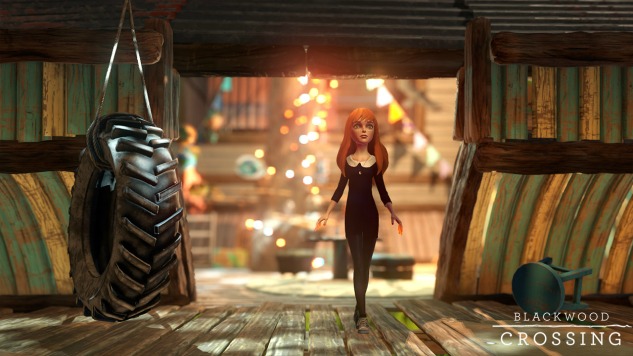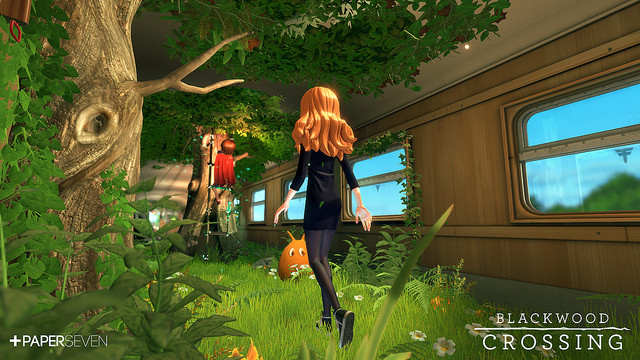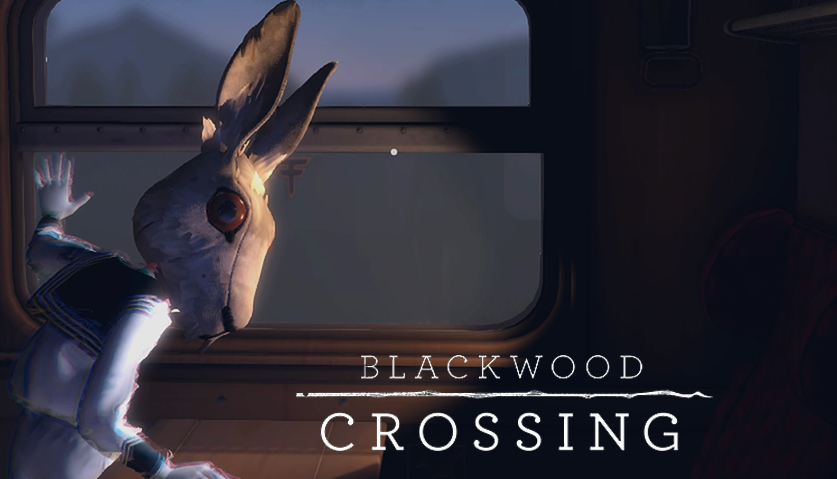Blackwood Crossing is a first-person narrative adventure about life and loss. The player controls Scarlett, a confident and fearless teenager, attempting to help her brother Finn in a temperamental dreamscape.
The game only has a few settings to explore — a train, an island and a tree house — but the amount of care put into the re-imagining of each visit actually makes the limited environment an asset. You’ll find yourself exploring familiar territory in brand new ways, trying to solve puzzles and learn more about your and Finn’s predicament.

Additionally, the supporting characters and their dialogue are crucial to piecing together a narrative and progressing through the environments. They blend seamlessly with each section of the dreamscape, as do their conversations. The overall haunting impression of the game couldn’t be achieved without the symbiotic nature of its characters and the world they inhabit. You’ll find yourself hanging on to each conversation, just as the developers need you to.
But what will you actually be doing? Scarlett is able to manipulate certain elements that stand in her way, giving her some impressive power over the storm around her. These physical manifestations of Finn’s anger and fear not only provide interesting obstacles for the player to overcome, but do a great job of demanding your attention and committing you to their story.
This is an incredibly innovative way to look at such strong human emotions, and will have you pondering what the gameplay may be like in different relationships with different dynamics. It is still an emotionally taxing experience, and this is an older sister trying to sooth her younger brother. The game manages to maintain a playful and inquisitive feel, even after dealing with some serious emotional hurdles.
Much of this is due to its visual appeal. The darkest and most frightening times in Blackwood Crossing are in sharp contrast to its glowing safe areas. These are not necessarily light-hearted, but instead beautiful in-game replications of the human experience. The highs are high and the lows are low, and the aggressively lighted world around you follows suit.

There are some flaws in Blackwood Crossing — though if you haven’t caught on already, there should be nothing stopping you from picking the title up.
The first is simply the length. The entire narrative lasts around four hours, and that’s a high estimate. The budget may not have been available to make a physically larger game, but you’ll want more dialogue — and I’m not entirely sure why PaperSeven couldn’t give it to you. It’s not that a shorter game couldn’t exist in this genre, it’s that this one in particular feels a bit under developed.
The gameplay could use a little fine tuning as well. There is no rushing, as large portions of the dialogue are ambient. But a fast walk button while solving puzzles would really decrease some frustration. Combine this with a surprisingly finicky cross hair, and there were times that controlling Scarlett definitely detracted from the experience.
Any gripes with the story are purely subjective, and if you enjoy narrative adventures you will likely enjoy this one. Blackwood Crossing is a great example of the genre, and you’ll be thinking about it long after the credits roll.







Published: Apr 6, 2017 12:02 pm